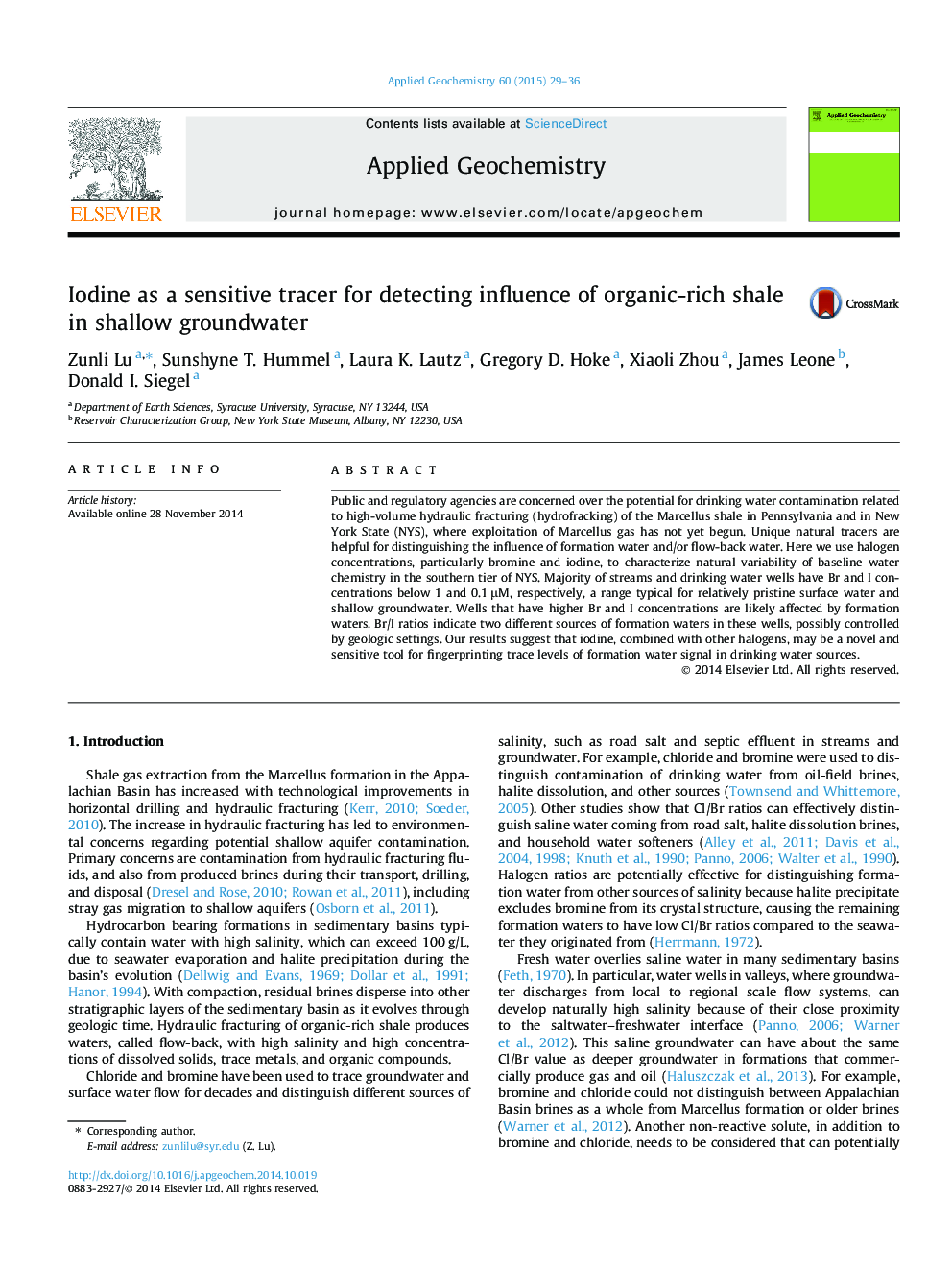| Article ID | Journal | Published Year | Pages | File Type |
|---|---|---|---|---|
| 4435638 | Applied Geochemistry | 2015 | 8 Pages |
•Iodine is a promising groundwater tracer.•Small amounts of formation waters are identified in few drinking water wells.•Sources of iodine are organic rich shale formations including the Marcellus.
Public and regulatory agencies are concerned over the potential for drinking water contamination related to high-volume hydraulic fracturing (hydrofracking) of the Marcellus shale in Pennsylvania and in New York State (NYS), where exploitation of Marcellus gas has not yet begun. Unique natural tracers are helpful for distinguishing the influence of formation water and/or flow-back water. Here we use halogen concentrations, particularly bromine and iodine, to characterize natural variability of baseline water chemistry in the southern tier of NYS. Majority of streams and drinking water wells have Br and I concentrations below 1 and 0.1 μM, respectively, a range typical for relatively pristine surface water and shallow groundwater. Wells that have higher Br and I concentrations are likely affected by formation waters. Br/I ratios indicate two different sources of formation waters in these wells, possibly controlled by geologic settings. Our results suggest that iodine, combined with other halogens, may be a novel and sensitive tool for fingerprinting trace levels of formation water signal in drinking water sources.
